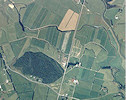October 19, 2010

FAQ: Why didn't my land get accepted into CRP in the 2010 general signup? What should I do now? Can I try to bid it into the continuous CRP? Next time I try to get land accepted into CRP, how high should I bid?
Answer: Provided by Vickie Friedow, conservation program specialist at the Farm Service Agency state office in Des Moines.
The general sign-up for the CRP program is a competitive bidding process. During the sign-up period, farmers may bid or offer eligible land for acceptance into the program. Not all offers are accepted and these reasons are varied from offer to offer.
During sign up, all offers or bids are given an Environmental Benefits Index or EBI score. This score reflects the environmental benefits to be gained from enrolling the land in CRP. The EBI consists of five environmental factors (wildlife, water, soil, air and enduring benefits) and a cost factor.
USDA's goal is to get the most environmentally sensitive ground into CRP for the lowest cost. While how high a producer bids is an individual decision, the rental rate is just one factor in determining the acceptance into CRP. The physical characteristics of the land are also a factor, such as the slope or erodibility index. Land that has a steeper slope receives more points in that category than a piece of land that is flat. To make a less erodible piece of land more competitive for enrollment into CRP, producers may have to look at different seeding options.
Another option may be to modify the land
Modifying the land offered may also be an option. For example, an entire field may have less of a chance of getting accepted into the program than just the portion of the field with the steeper slope. Because several factors are looked at when determining the EBI score, more than one decision may have to be made when trying to enroll the acreage or to increase the EBI score.
Land not accepted into the 39th sign up, could be eligible for the continuous program. Producers should check with their local FSA office to determine what land could be eligible for enrollment. The land not accepted can be put into crop production, but be reminded, if the land is highly erodible, a conservation system may need to be followed. This is also true for land that has expired from a previous CRP contract.
Consult with your local FSA and NRCS offices to determine if a conservation system will need to be followed before returning land to crop production.
If you have specific questions or need details regarding USDA farm programs, contact your local USDA Farm Service Agency office. You can also get news and information about DCP, ACRE and other USDA programs at www.fsa.usda.gov.Two Iowa State University Extension Web sites have farm program information and analysis. They are ISU's Ag Decision Maker site at www.extension.iastate.edu/agdm and ISU Extension Specialist Steve Johnson's site at www.extension.iastate.edu/polk/farmmanagement.htm.And be sure to read the regular column "Frequently Asked Questions about the Farm Program" that appears in each issue of Wallaces Farmer magazine and at www.WallacesFarmer.com
You May Also Like




